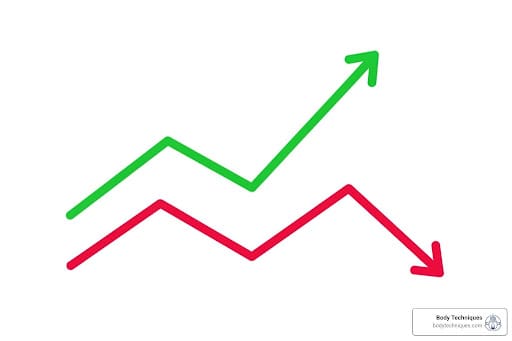The benefits of exercise for workplace wellness are undeniable. Across Canada and the USA, desk-bound employees contribute to rising healthcare costs, reduced productivity, and increased turnover.
Key Benefits of Exercise for Workplace Wellness:
- Reduced Healthcare Costs: For every dollar spent on health promotion, medical costs fall by $3.27
- Lower Absenteeism: Physically active employees miss 4.1 fewer days of work per year
- Increased Productivity: Work performance improves by 4% to 15% through regular physical activity
- Better Mental Health: 7.6% improvement in sleep quality, 7.1% boost in mood, 11.6% increase in energy levels
- Stronger Retention: 32.4% lower turnover rates for fitness program participants
Here’s the reality: 1.8 billion adults worldwide don’t meet basic physical activity guidelines. This physical inactivity has increased by 5 percentage points since 2010, costing businesses dearly.
Physical inactivity was responsible for 11.1% of healthcare expenditures in a recent study period. Inactive employees cost companies an average of 26 cents per hour worked in sick leave alone. Multiplied across an entire workforce, the numbers get scary fast.
Conversely, companies that invest in employee wellness see massive returns. Studies show workplace exercise programs can reduce sick leave by up to 32%, boost productivity by 52%, and that physically active employees take 27% fewer sick days.
The WHO recommends 150-300 minutes of moderate activity per week to reduce mortality risk by 20-30%. Yet most workplace wellness programs barely scratch the surface.
The Employee Advantage: How Exercise Transforms Health and Happiness
Imagine your employees arriving at work energized, focused, and happy. They handle stress with ease, rarely call in sick, and tackle challenges creatively. This isn’t a fantasy; it’s one of the most powerful benefits of exercise for workplace wellness.
Workplace exercise is more than gym memberships; it’s about how movement transforms your people from the inside out, creating healthier, happier, and more productive team members.
Stronger Bodies, Fewer Aches: The Physical Payoff
Most of us spend too much time sitting. Our bodies weren’t designed for desk marathons, leading to back pain, neck strain, and afternoon energy crashes.
Exercise is a game-changer. Regular physical activity dramatically reduces the risk of chronic conditions like heart diseases, type 2 diabetes, and certain cancers. Moderately active employees have significantly lower annual healthcare costs, with even greater savings for those who become more active.
The impact on workplace comfort is also impressive. Work-related musculoskeletal disorders (WMSDs) and repetitive strain injuries (RSIs) are common, leading to discomfort, reduced productivity, and costly sick leave. The good news is that workplace exercise programs focusing on mobility, stretching, and strengthening have reduced these disorders and sick leave by over 50% in some companies. Simple daily movements can prevent years of pain.
Beyond injury prevention, regular movement delivers increased energy levels, improved stamina, and better sleep quality. Better sleep means refreshed employees ready for the day. Our Yoga Poses to Combat Sitting All Day at Work guide shows how to easily integrate these movements.

Sharper Minds, Better Moods: The Mental and Cognitive Boost
When your employees start moving, their brains work better. Exercise isn’t just physical; it opens up mental potential.
The science is clear: physical activity releases endorphins (mood elevators) and reduces cortisol (the stress hormone). This makes exercise effective for stress management and reducing symptoms of anxiety and depression. As one expert said, “People who feel better tend to show up to work in better ways, too.”
The mental benefits extend beyond mood. Physical activity sharpens cognitive function, including memory, attention, and decision-making. It fuels creativity, improves focus, and boosts overall brainpower.
The psychosocial benefits of workplace exercise impact the entire workplace culture. Group exercise builds stronger peer relationships, fosters community, and reduces the risk of burnout syndrome. Studies on healthcare workers found group-based physical exercise improved vitality and helped manage pain and worry. The ripple effects include boosted morale, stronger team cohesion, and a more enjoyable workplace.
When employees engage in physical activity, they build stronger bodies, sharper minds, and more resilient spirits, creating a sense of happiness that radiates throughout your organization. We explore this further in our article on Occupational Wellness Programs: The Key to Tackling Stress and Elevating Workplace Moral

The Business Bottom Line: Unpacking the Benefits of Exercise for Workplace Wellness
Your CFO cares about the bottom line, and the benefits of exercise for workplace wellness deliver measurable returns. Investing in employee fitness is a proven strategy that transforms your workforce into a profitable asset. Companies with wellness programs report significant cost savings, improved productivity, and stronger retention.
Slashing Costs: Reducing Absenteeism and Healthcare Expenses
Physically inactive employees cost companies 26 cents per hour worked on sick leave alone. Across your workforce, that’s a significant expense. Conversely, the savings are impressive. Employees getting 75 minutes of vigorous activity per week miss 4.1 fewer days of work per year. This means smoother operations and projects staying on track.
The healthcare cost impact is dramatic. In contrast, moderately active employees have about $250 lower annual healthcare costs than inactive colleagues, with savings jumping to $450 per person for some.
The ROI is clear: for every dollar spent on health promotion, medical costs fall by $3.27, and absenteeism costs drop by $2.73. These are real-world results. Workplace physical activity programs can reduce sick leave by up to 32% and decrease absenteeism by up to 20%. As confirmed by CDC data, investing in employee fitness is good for business.
Boosting Performance: The Link Between Fitness and Productivity
A healthier employee is a more productive one. Physical activity improves concentration, cognitive function, and decision-making skills. Active teams have more energy and less fatigue, helping them stay focused. The productivity gains are measurable, with work performance improving by 4% to 15% through regular physical activity.
Group fitness activities also strengthen peer relationships and improve team cohesion. This camaraderie leads to better communication, collaboration, and project management. Wellness program participants report higher job satisfaction and engagement. Feeling valued boosts morale, loyalty, and commitment, leading to a more reliable and productive workforce.
The retention benefits are also compelling. Turnover rates for fitness program participants are substantially lower. Considering recruitment and training costs, these retention improvements deliver serious savings,
us leo.

Putting Wellness in Motion: 7 Actionable Workplace Exercise Strategies
Now that you know the benefits of exercise for workplace wellness, how do you make it happen? Effective programs don’t require a full gym. It’s about integrating movement into your daily operations. Here are 7 actionable strategies:
1. Offer On-Site and Virtual Fitness Classes
Making fitness accessible is key. Offer a variety of classes for different interests and fitness levels:
- Yoga for flexibility and stress relief
- Pilates for core strength
- Zumba for an energetic dance workout
- HIIT (High-Intensity Interval Training) for quick, effective bursts
- Gentle stretching sessions for all-day desk workers
We offer flexible on-site (mobile massage, yoga) and virtual wellness programs for our clients across Canada and the USA. This ensures all employees, whether in-office or remote, have access to professional fitness opportunities. Learn more about our Corporate Yoga Wellness Programs and Virtual Team Building Exercises for Hybrid Work Environments.
2. Create an Activity-Friendly Environment
Simple changes can make a big difference. Look for opportunities to encourage movement:
- Promote stair use: Make stairs more appealing than elevators.
- Walking meetings: Take team discussions outside or around the office.
- Provide bike racks and showers: Encourage active commuting if your facilities allow.
- Create safe walking paths: Designate clear, accessible routes around your building or campus.
- Standing desks: Offer adjustable workstations to reduce prolonged sitting.
- Encourage small movements: Remind employees to do leg lifts while checking emails or park further away.
- Use resources: Check out the NASA DeskFit exercise guide or our own 5 Desk-Friendly Yoga Poses.
Optimize existing resources like hallways and stairwells for low-cost physical activity.
3. Implement Challenges and Incentives
Friendly competition can be a great motivator.
- Walking challenges: Set collective or individual step goals.
- Team competitions: Divide employees into teams for fitness challenges.
- Gamification: Use apps or platforms to track progress and create leaderboards.
- Rewards for participation: Offer non-monetary incentives like charity donations or paid time off.
- Wellness stipends: Provide funds for gym memberships or fitness classes.
Incentives can boost participation by 22%. The goal is to motivate movement and engagement. Our article on How to Promote Fitness in the Workplace offers more ideas.
4. Promote Active Transportation
Encourage active commutes by:
- Subsidizing public transit: Many public transit options involve walking.
- Bike-to-work programs: Provide secure bike storage and changing facilities.
- Walking groups: Organize groups for employees who live close enough to walk together.
Active transportation is a cost-effective way to increase physical activity.
5. Encourage Micro-Breaks and Desk Exercises
Small, frequent bursts of activity throughout the day make a significant difference.
- “Booster Breaks”: Promote short, structured breaks for physical activity.
- Desk exercises: Simple stretches and chair squats can be done at a workstation.
- Meeting guidelines: Incorporate movement breaks between meetings.
These micro-interventions improve health and productivity without disrupting workflow.
6. Leverage Technology and Resources
Technology can be a powerful ally, but be mindful of its limitations for sustained change.
- Wearable technology: Provide or subsidize fitness trackers.
- Fitness apps: Offer subscriptions to apps with guided workouts and meditation.
- Online wellness platforms: Use platforms that offer virtual classes and challenges.
Continuously evaluate technology to ensure it sustains long-term behavior change.
7. Foster Community Partnerships
Partnering with community resources can extend your wellness efforts and provide diverse opportunities.
- Local gyms and studios: Negotiate discounted memberships.
- Community centers: Use their facilities for employee events.
- Local parks and trails: Organize outdoor activities like group walks.
- Support local initiatives: Contribute to creating activity-friendly environments in the community.
Beyond the Squat Rack: Why a Culture of Health is Your Greatest Asset
Successful wellness programs become part of the company’s DNA. Beyond classes and challenges, the real benefits of exercise for workplace wellness emerge when physical activity is woven into your culture. This means creating an environment where healthy choices feel natural and supported.
A company gym will collect dust if the culture doesn’t support its use. The magic happens when movement becomes as normal as checking email.
Lead by Example: The Critical Role of Leadership
If leadership is “too busy” for wellness, it sends the wrong message. Employees watch what leaders do. Effective programs start at the top and flow through all levels of management.
Visible leadership participation is non-negotiable. When leaders join yoga or take walking meetings, it creates “passive permission,” showing that wellness is truly valued. Don’t overlook middle managers. They direct daily activities and can champion or sabotage wellness. A manager encouraging a stretch break actively builds a culture of health.
As one organizational psychologist said, build a culture before you build a gym. Allocating time for wellness and modeling healthy behaviors shows that well-being matters as much as quarterly reports.
Tailor and Tweak: Maximizing Engagement for a Diverse Workforce
Your workforce is diverse, so your wellness approach should be too. Different employees have different motivations. This is where custom programming shines.
Employee surveys are key. Ask what activities people want, what their barriers are, and what would encourage participation. You might find scheduling is a bigger barrier than motivation.
Personalized programming offers variety and choice for different preferences (group vs. solo, high-intensity vs. gentle). The key is addressing different motivations; for example, frame a walking program as stress relief for some and team bonding for others.
Inclusive activities for all abilities are essential. Your program should welcome everyone, regardless of fitness level, age, or ability. Offer options like chair yoga or walking groups with different paces.
Setting realistic goals and continuous monitoring keep programs effective. What works initially may need tweaking. Regular feedback helps you adapt and meet your team’s evolving needs. This adaptive approach creates a genuine cultural shift. We explore this in our guide, Workplace Wellness: The Importance of Planning Now.
Building a culture of health is a marathon, not a sprint. It requires patience, flexibility, and a genuine commitment to your employees’ well-being. But when you get it right, the change is remarkable—not just in individual health outcomes, but in the entire energy and spirit of your organization.
Conclusion: Invest in Movement, Reap the Rewards
The benefits of exercise for workplace wellness show that movement is essential for business success. With improvements in employee health, mental clarity, and the company’s bottom line, the evidence is clear: investing in movement is a win-win.
Imagine healthier employees who miss fewer sick days, have more energy, and are more focused. Picture lower healthcare costs, soaring productivity, and a culture that attracts and retains top talent. These are proven outcomes for companies across Montreal, Toronto, Vancouver, and beyond.
Workplace wellness is accessible. You don’t need a huge budget to see results. Whether through onsite yoga, virtual fitness, or walking meetings, every step matters. The key is a supportive culture where activity is natural.
The difference between a successful program and one that fails is sustainability. It requires leadership participation, custom programs for a diverse workforce, and the understanding that wellness isn’t one-size-fits-all.
At Body Techniques, we’ve seen the right wellness approach revolutionize company culture. Our comprehensive programs—from mobile massage and yoga to virtual solutions—are designed for seamless, measurable implementation. We provide the expertise, software, and all-inclusive service to build a healthier workplace.
The question isn’t if you can afford to invest in wellness, but if you can afford not to. With a strong ROI and the value of an engaged workforce, the choice is clear.
Ready to transform your workplace? Let’s build a wellness strategy that fits your team’s needs and business goals. Explore our Stress Management Programs: Fitness Classes to open up the potential of a healthier, happier, and more productive workforce. Your employees and your bottom line will thank you.



